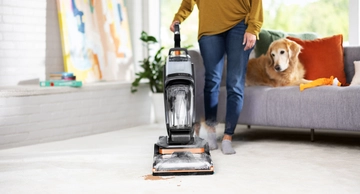How to Handle Plumbing Emergencies Yourself
Plumbing emergencies are not something that you have to deal with too often, especially if you are generally taking care not to just toss anything down your sink, but when they do happen, they can cause quite a bit of damage in just a short time, or at least make it quite inconvenient to go ahead with the daily routine. That’s why it may be prudent to educate yourself on what to do in case of an emergency of this type, so that you can fix the issue yourself and save money, or at least try to contain the damage until a professional plumber comes. Here are some tips on how to do that.
Be Prepared

You need to have a basic idea of what your plumbing system looks like, how does it work, and where the shut off valves are, both for the entire house as well as for individual points of use. If you have a burst pipe that is spewing water into your house, you don’t want to be running around looking for a way to turn it off.
Apart from getting familiar with some basic facts and principles, you’ll also need to have the right set of tools. While you can improvise some solutions, you should always have a plunger, nut driver, auger, basin, adjustable and pipe wrench, as well as some drain cleaning liquid.
Unclogging Drains
Blocked drains are one of the most common problems, and even though they usually don’t create too much damage, they can be quite inconvenient. Attacking the clog with the plunger should be your first step, as it might allow you to easily solve your problem, but it could also push the clog even deeper, only adding to the trouble.
If the plunger remains ineffective, you can try with the auger, or as it is also known, the snake. If this approach doesn’t work either, you may need to resort to a drain cleaning liquid. You should know, however, that these liquids can damage the pipes if used too often, or with pipes made of certain materials, and that they are not too environment friendly. An alternative to these chemicals would be using a combination of white vinegar, baking powder and warm water. The reaction between the vinegar and powder should push the clog downward, if you make sure to cover the sink after adding vinegar.
Fixing a Broken Pipe
One of the more serious problems, which you may not be able to do much to fix, but can at least try to limit the damage it causes. If you realize that you have a burst pipe, you should immediately shut off the water at the main valve. Now, you should locate the compromised spot. If it only a pinhole that you are dealing with, you can solve the problem with something as simple as some duct tape. However, most of the other types of fractures can be much more difficult to deal with.
If you are dealing with a hairline crack, you can try to patch it up with a pipe clamp, but make sure to clean the area with sandpaper, and wipe it off with a rag before applying the clamp. If, on the other hand, pump joints are leaky, you could try and fix the issue with plumber’s putty, but also make sure to clean the area before applying it.
Leaky Taps
Leaky taps are one of the most irritating plumbing scenarios. The easiest way to resolve this kind of issue is, firstly, to find a way to stop the water by looking for a shut off valve under the sink. If not there, you may have to shut off the main valve. Cover the basin with a rag or place the plug in to prevent any part falling down the drain. Once done, open the tap to relieve the water pressure. Look for a plastic cover on the top of the faucet and remove it with a flat head screwdriver. Carefully remove the screws underneath. Continue by removing the handle’s cap and the handle itself.
You will need to use a wrench to take of the packing nut, and find the three parts that may be causing the leaks: the seat washer, the O-ring and jumper valve. These come in standard sizes, so you should not have any trouble fitting them in place. Once you’ve replaced the worn-out parts, reassemble the faucet, close it and open the water valve. There shouldn’t be any leaks and the fixing is done.
Frozen Pipes
If your house has been empty for a while or even was occupied during the winter, this problem might emerge in low outside temperatures when water freezes inside the pipe. If the pipe hasn’t burst yet, the advice would be to use hot water bottles by slowly placing them from the end of the pipe towards the tap. Do it slowly because the water contracts with changes in temperature, so if you used an open flame or other source of heat you could risk rapid water expansion that could split the pipe. You could always try to avoid this kind of situation by adding insulation around the pipes located outside of your home. Alternatively, you could make sure a trickle of water is constantly dripping through the pipe during very cold periods.
Every homeowner can attend to these issues with just a little bit of patience and previous informing. Nevertheless, always have in mind that not everything is solvable by your capable hands, there are times when a professional needs to step in.
Ariel is a creative blogger always trying to make peace with the world by contributing useful information and solving any home-related enigmas. She is always happy to be of help.


